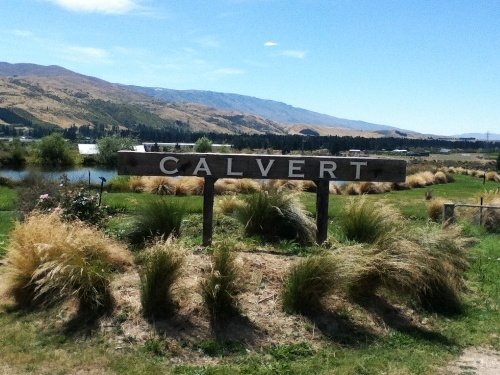Another producer of Central Otago, who decided to adopt an organic regime and uses some of the biodynamic principles is Felton Road. Everyone agrees he’s probably the most famous producer abroad and certainly the most famous during the wine tastings dedicated to enthusiasts. The tasting of pinot noir in which I recently participated was focused on Bannockburn, the sub-region where you can find Felton Road and Mount Difficulty, which stood out for their unmistakable structure, with, respectively, Block 3 and Target Gully (both 2009, an almost perfect vintage according to many).

Speaking of a Burgundy-mark in the making of these jewels risks to deviate the attention to wines whose origin is in fact highly recognisable but it can be useful to explain the principle on which these producers base their work, in terms of rigour, cleanliness and drinkability. This however moves the attention to the techniques used rather than on the central role of the territory, since they are aware that for many the meaning of
terroir also includes the work of men and the style with which this is expressed.
Family run
Aurum, with a touch of Burgundy, is another brand that explains the context of New Zealand very well when it comes to finding inspiration in different models and making them yours, in a sort of recurring assemblage.
Aurum, which produces a lovely
methode traditionelle, can be found in a very recognisable sub-region, namely Cromwell, placed on the bifurcation of Lake Dunstan; the wines obtained here are more direct than those made in Bannockburn, but they don’t lack in depth. When you’re in the area, you must pay a visit to
Burn Cottage, a very reserved producer of wines that are slightly more concentrated than the others, and lunch at Northburn Station, on the way to Bendigo.
Is it a question of time? The weak point of this determined enterprise that aims at gaining the trust of the consumer probably remains the price. While the territory is a given variable, after the confirmation given by around 30 vintages, and the label (based on a simplified law) is on the consumer’s side, so that it can be comprehensible and recognisable, what’s left is the technique and the right market positioning. As for the technique, on which lots has been written throughout history, it would deserve a discussion of its own, but time (and, incredibly, free markets) could bring some consolation.
With regards to positioning, it is necessary to make a premise about New Zealand’s wine-market which reveals quite a few schizophrenic traits: wines are priced in a way that isn’t always justifiable and distribution hardly helps the market. While the distribution channels reflect this attitude of the domestic market, enthusiasts have a hard time: without any access to other areas of production, or given the same price, the choice would be tempting, but when choice is wide, it’s history that makes the difference. The more mature markets require products of the highest quality, with all that this may require in terms of production, while emerging markets prefer for the product to be accessible, with regards to quantity, fruition and price. One should take this into consideration.